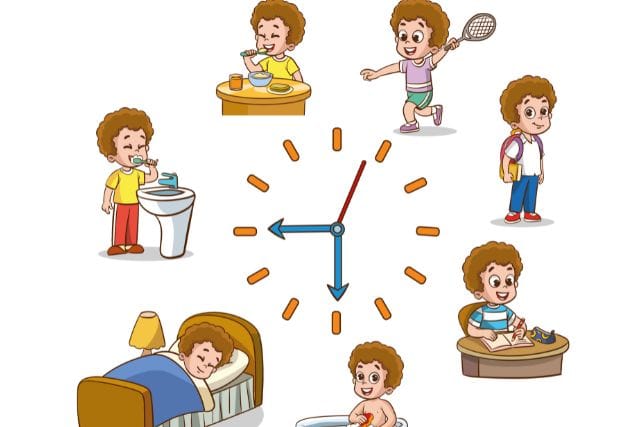Autism, or Autism Spectrum Disorder (ASD), is a neurodevelopmental condition that affects how a person perceives and interacts with the world. Every autistic individual is unique, and what works for one may not work for another. However, certain common mistakes can harm their well-being and the quality of interactions. Here are 10 things not to do with an autistic person when engaging with an autistic person.
Table of Contents
1. Forcing Eye Contact
Eye contact is often considered a sign of attention or respect in Western cultures. However, many autistic individuals find it uncomfortable or even overwhelming. Forcing an autistic person to “look you in the eye” can increase their stress and make conversation more difficult.

Alternative: Focus on what they are saying rather than whether they are making eye contact. Some autistic individuals listen attentively while looking elsewhere. Respect their natural way of communicating.
Why It Matters: Studies have shown that forcing eye contact can actually decrease an autistic person’s ability to focus on the conversation. It is not a sign of rudeness but a different way of processing information.
2. Ignoring Their Sensory Needs
Autistic individuals can be hypersensitive or hyposensitive to sensory stimuli such as noise, light, textures, or smells. For example, fluorescent lights or constant background noise may cause sensory overload, making the situation unbearable for them.

Common Mistake: Insisting they stay in a noisy or crowded environment without considering their discomfort.
Solution: If possible, offer a quiet space, soothing items like noise-canceling headphones, or comfortable clothing adapted to their needs.
Understanding Sensory Processing Differences
Some autistic individuals may seek out sensory stimulation (such as touching various textures), while others may avoid it entirely. Being aware of their preferences can greatly improve their comfort.
3. Changing Their Routine Abruptly
Routines are essential for many autistic individuals because they provide structure and predictability in a world that may seem chaotic. A sudden change, like a rescheduled meal or a canceled activity, can cause anxiety or frustration.

Common Mistake: Imposing last-minute changes without explanation.
Solution: Prepare them in advance by explaining the change and allowing them time to adjust. Visual tools, such as schedules or transition boards, can help them understand and accept modifications.
Why Routine Matters
Predictability reduces stress. For instance, unexpected events can cause distress because they disrupt an expected pattern. Providing prior notice helps them feel in control.
4. Expecting Immediate Responses
Some autistic individuals take longer to process information. Their thinking pace may differ, and pressuring them to respond quickly can lead to stress or communication breakdowns.

Common Mistake: Interpreting their silence as refusal to communicate.
Solution: Give them the necessary time to process and formulate a response. Be patient and avoid interrupting them when they speak.
Additional Tip
Using written communication or giving extra time in a conversation can be beneficial, as some autistic individuals process information better visually than verbally.
5. Using Figurative or Implicit Language
Idioms, metaphors, and jokes can be difficult for some autistic individuals to understand. For instance, saying “head in the clouds” may be taken literally.

Common Mistake: Using complex language without checking for understanding.
Solution: Use clear and direct language. If you use a metaphor, briefly explain it to avoid confusion.
How to Adjust Your Communication
Instead of saying, “That was a piece of cake,” say, “That was very easy.” Simplifying language ensures clarity.
6. Thinking Autism Is Something to “Fix”
Autism is not a disease. Autistic individuals simply have a different way of perceiving and interacting with the world. Trying to “normalize” them or asking them to hide their autistic traits can harm their mental well-being and self-esteem.
Common Mistake: Insisting they adopt “neurotypical” behaviors, like forced eye contact or suppressing their stimming (hand-flapping, rocking, etc.).
Solution: Accept them as they are. Recognize and value their strengths, such as creativity, attention to detail, or exceptional memory.
Why Acceptance Matters
Encouraging self-acceptance instead of masking autistic traits improves mental health and builds confidence.
7. Dismissing or Invalidating Their Emotions
Autistic individuals may express emotions differently. For example, they may seem neutral or unemotional even when happy or upset. Underestimating their emotions or ignoring them can create a communication gap.

Common Mistake: Saying phrases like “you’re overreacting” or “it’s nothing” when they show distress.
Solution: Take their emotions seriously, even if they don’t express them in a way you expect. A compassionate approach helps build trust.
How to Support Emotional Expression
Encourage alternative forms of expression, such as writing, art, or using emotion cards, to help them communicate their feelings
8. Overloading Them with Information
Cognitive overload can occur when an autistic person is given too much information or too many instructions at once. This can overwhelm them, leading to a shutdown (withdrawal) or meltdown (emotional crisis).

Common Mistake: Giving multiple complex instructions at once.
Solution: Simplify explanations by breaking them into clear steps. Visual or written aids can also help with understanding.
Effective Communication Strategies
Providing bullet points or breaking down tasks into numbered steps can make processing easier.
9. Disregarding Their Food Preferences
Many autistic individuals have specific food sensitivities due to texture, smell, taste, or temperature. Forcing them to eat something they find unpleasant can cause stress or food refusal.
Common Mistake: Insisting they eat “like everyone else” or ignoring their preferences.
Solution: Respect their food choices. If a specific food is important for their nutrition, look for alternatives that meet their sensory needs.
Helpful Tips for Mealtime
Introduce new foods gradually and in small amounts. Let them explore different textures without pressure.

10. Comparing Them to Neurotypical Individuals
Comparisons with neurotypical individuals or other autistic people can be discouraging. Each autistic person is unique, with their own strengths, talents, and challenges.
Common Mistake: Saying phrases like “your autistic brother can do this, why can’t you?”
Solution: Avoid comparisons. Instead, focus on their achievements and support them in their personal growth.
Encouraging Individual Growth
Celebrate their unique progress without measuring them against others. Focus on what they excel at rather than what they struggle with.
Conclusion: Prioritize Kindness and Understanding
Interacting with an autistic person requires patience, flexibility, and empathy. By avoiding these common mistakes, you can foster better communication and create an inclusive, respectful environment. The key is to recognize and accommodate their unique needs while appreciating their strengths.
A kind and open-minded attitude, active listening, and patience are essential for building enriching relationships with autistic individuals.
Discover also our post: Autism: A Complex Disorder Affecting Brain Development and Behavior